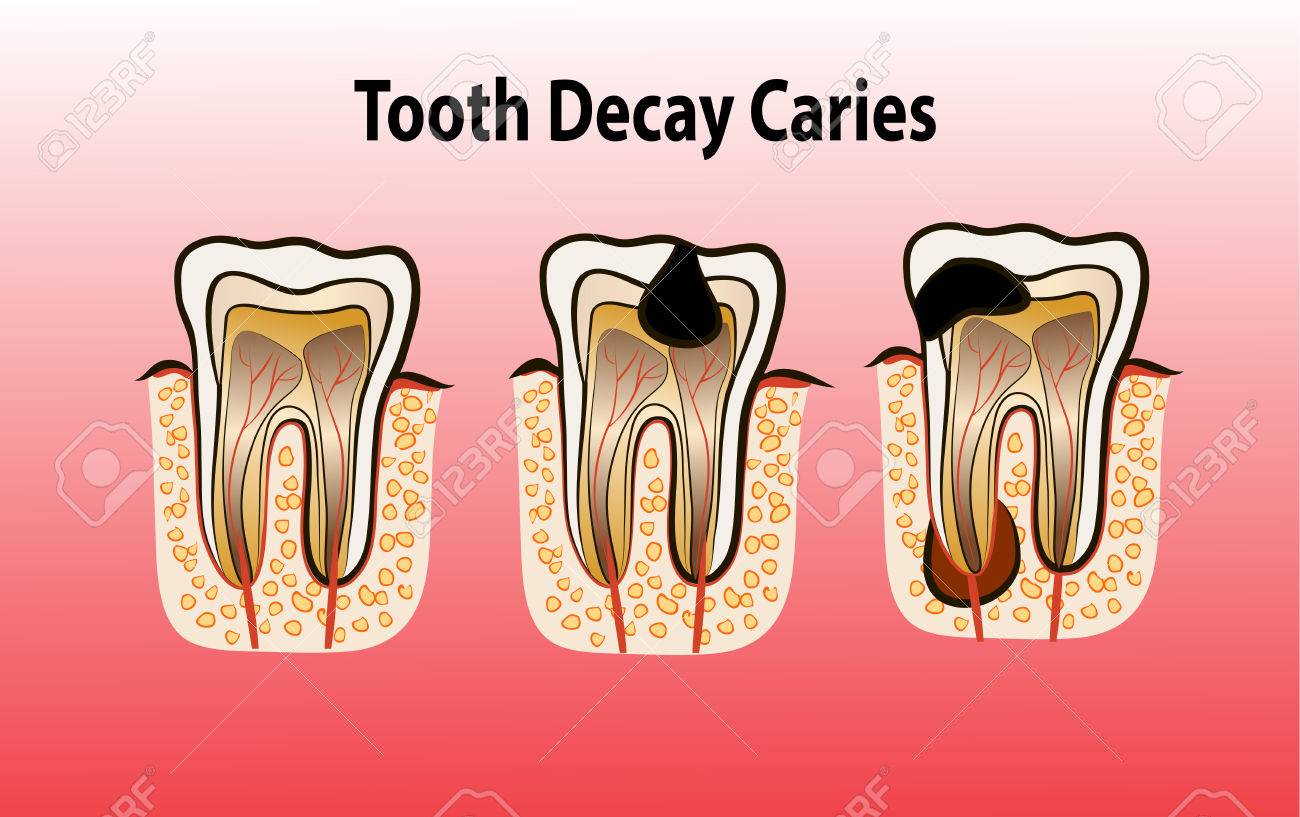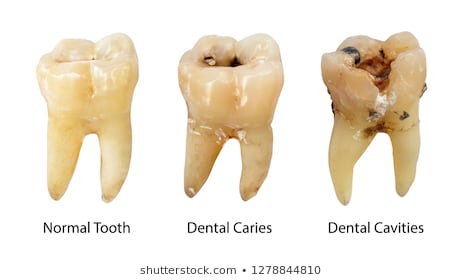Looking for a great Dentist to make you feel better?
Click on the link below to find the best Dentist near you
Find a Dentist Near Me
Dental caries also referred to as tooth decay or dental cavities, is one of the most common persistent diseases. It is when there is a breakdown of teeth due to the acids made by bacteria. The teeth affected with caries may present with various colors, such as yellow, black and so on. Some of the symptoms of this condition may include pain and difficulty when eating. This condition if not well managed can lead to complications such as the inflammation of the tissue around the tooth, loss of tooth, infection and the formation of an abscess.
Dental caries occurs when the acid from bacteria dissolves the hard tissues of the teeth. The acid is produced from the bacteria during the breakdown of food debris, especially sugar on the tooth surface. The main source of energy for these bacteria are simple sugars. Caries develops when the breakdown of the mineral is more than the build-up from sources like saliva. There are some factors that increase the risk of the development of dental caries. Some of them include diabetes mellitus, Sjogren’s syndrome, and so on. There are also medications that could reduce the amount of saliva produced. Some of them include antihistamines and antidepressants. Some of the ways of preventing dental carries include regular cleaning and flossing of the teeth, a diet low in sugar, and a small amount of fluoride.
What Are The Symptoms Of Dental Caries?
There are various symptoms of dental caries. The signs and symptoms depend on the extent and location. Persons affected with dental caries may not present with any symptom in the initial stage, and some may not present with any symptom at all. On the other hand, some affected persons may experience signs and symptoms, especially as the decay gets larger. Below are some of the signs and symptoms of dental caries: Looking for a great Dentist to make you feel better?
Looking for a great Dentist to make you feel better?
Click on the link below to find the best Dentist near you
- Persons affected may experience a toothache, spontaneous pain, or pain that develops without any apparent cause.
- The affected tooth may become highly sensitive.
- Patients may experience mild to sharp pain, especially when consuming something sweet, hot, or cold.
- There might be visible holes in the affected teeth.
- Affected persons may experience pain when they bite down.
What Are The Causes Of Cavities?
As earlier mentioned, there are various causes of dental caries. However, the most common cause of tooth decay. Below are some of the ways tooth decay develops:
- Plaque forms: Dental plaque usually appears as a clear sticky that coats the teeth. It occurs when an individual consumes a lot of sugar and starch, and not cleaning the teeth well. Bacteria rapidly starts to feed on sugars and starches that are not cleaned off the teeth. This if not controlled, leads to the formation of plaques. These plaques when they are allowed to stay on the teeth, foes harden under or above the gum line into tartar. This tartar makes it hard to remove and creates a shield for bacteria.
- Plaque attacks: The acids in plaque remove minerals in the tooth’s hard, outer enamel. This erosion causes the formation of tiny holes in the enamel, which is the first stage of cavities. Once the areas of enamel have been worn away, the bacteria and acid can now affect the next layer of the teeth, also known as dentin.
- Destruction continues: Bacteria and acid continue to march through the teeth, moving next to the pulp that contains the nerves and blood vessels. The activity of the bacteria and acid causes the pulp to become swollen and irritated from the bacteria. Due to the lack of space for the swelling to expand inside the tooth, the nerve inside the nerve becomes pressed, leading to a lot of pain. This, in some cases, can extend outside of the tooth root to the bone.

What Are The Factors That Increases The Risk Of Developing Dental Caries?
There are some factors that increase the risk of developing dental caries. They include the following:
- Location of the tooth: Most tooth decays tend to build in the back of the teeth, especially in the molars and premolars. This causes the affected tooth to having lots of grooves, pits and crannies, and multiple roots that can hold food particles. This makes it challenging to keep them clean, as compared to the front teeth that are easy to clean.
- Foods and drinks: One of the most common causes of tooth decay is the clinging of food on the teeth for a long time. Examples of such food include honey, sugar, cake, cookies, mints, dry cereal and so on. These foods are more likely to cause the decay of the teeth than foods that are easily washed away by saliva.
- Frequent snacking: Consuming snacks frequently, gives the mouth bacteria more fuel to produce acids that attack the teeth and break them down. In addition, consuming soda or other acidic drinks creates a regular acid bath over the teeth.
- Inadequate brushing: People that don’t brush their teeth regularly, especially after eating are prone to developing plaque, faster, which can cause the first stages of tooth decay.
- Bedtime infant feeding: This is common in babies that are given bedtime bottles filled with milk, formula, juice, and so on. These beverages when left on the teeth for long, even when they sleep can precipitate decay-causing bacteria.
- Inadequate fluoride: Fluoride is one of the minerals that are important in preventing cavities and also reverse the earliest stages of tooth damage. This is why fluoride is added to public water supplies. It is also an essential component of toothpaste and mouth wash.
How Is Dental Caries Treated?
The best way of taking care of your teeth is by identifying cavities, and other problems with the teeth before they lead to severe problems. Below are some of the various treatment options for dental caries:
- Fluoride treatments: This can be used to restore the tooth’s enamel, and to also reverse a cavity in the early stages.
- Fillings: This is done when the decay has progressed beyond the earliest stage.
- Tooth extractions: This is done when the teeth have become severely decayed, and can’t be restored. Tooth extraction involves the removal of the affected tooth.
References
2013 Annual Scientific Meeting: Global Innovations and Controversies in Cosmetic Surgery. (2012). American Journal of Cosmetic Surgery, 29(4), pp.298-330.
Niamtu, J. (2011). Cosmetic Otoplasty. American Journal of Cosmetic Surgery, 28(4), pp.261-272.
Shiffman, M. (2001). Beauty in Cosmetic Surgery. International Journal of Cosmetic Surgery and Aesthetic Dermatology, 3(4), pp.233-234.
Looking for a great Dentist to make you feel better?
Click on the link below to find the best Dentist near you





